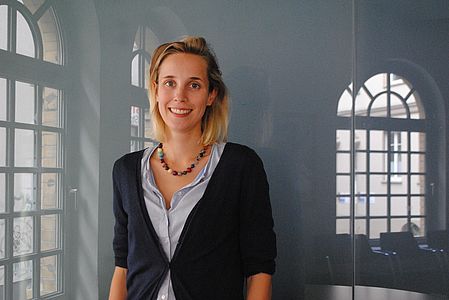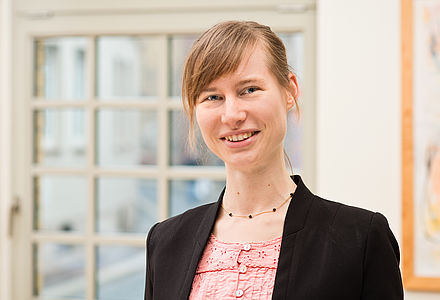Evaluation of Subsidy Programmes
This research group focuses on two main research questions: (i) What is the causal effect of cooperative innovation activities on the performance of firms and regions? (ii) What are the causal effects of public Research and Development (R&D) support schemes on the performance of firms and regions? The first research question concerns the dynamics of firms and regions as a result of their different innovation activities. We apply a micro-based integrative perspective on innovative activities which allows identifying causal effects of cooperative activities on specific outcomes (e. g., patent applications, scientific publications, employment growth, or productivity growth). Concerning the second research question, recent studies mainly focus on the evaluation of one specific subsidy scheme. Research in this group aims to overcome this shortcoming by considering various support schemes. Indicators for the firms’ success are (amongst others) patent applications and employment growth. The results allow insights for the future design of innovation support schemes.
Centre for Evidence-based Policy Advice (IWH-CEP)
Research Cluster
Economic Dynamics and StabilityYour contact

Mitglied - Department Präsidialbereich
EXTERNAL FUNDING
09.2019 ‐ 09.2022
Establishing Evidence-based Evaluation Methods for Subsidy Programmes in Germany (EVA-KULT)
European Regional Development Fund (ERDF)
The project aims at expanding the Centre for Evidence-based Policy Advice at the Halle Institute for Economic Research (IWH-CEP).
01.2018 ‐ 12.2020
Networked growth - Innovative Saxony-Anhalt through digital business models (Competence Center 4.0)
Federal Ministry for Economic Affairs and Energy (BMWI)
01.2017 ‐ 12.2018
Political Participation in Eastern Germany
Federal Ministry for Economic Affairs and Energy (BMWI)
12.2015 ‐ 11.2018
Socio-economic Effects of Research on Innovative Approaches for POC Diagnostics
Federal Ministry of Education and Research (BMBF)
Part of the EXASENS project. Coordinated by the Leibniz Institute of Photonic Technology (IPHT) in Jena, nine Leibniz institutes are working together on researching point-of-care (POC) technology for the prediction and diagnosis of chronic inflammatory respiratory diseases. See press release.
02.2017 ‐ 02.2018
The Importance of Non-University Research Institutions for the Development of Firms and Regions (Be_For_Reg-Projekt)
Federal Ministry of Education and Research (BMBF)
01.2015 ‐ 12.2016
Evaluation of the "Joint Task 'Improving the Regional Economic Structure'" in the Federal State of Saxony-Anhalt
Investitionsbank Sachsen-Anhalt
Refereed Publications
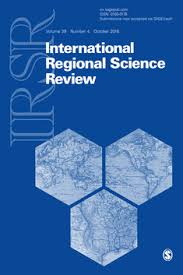
Joint R&D Subsidies, Related Variety, and Regional Innovation
in: International Regional Science Review, No. 3, 2017
Abstract
Subsidies for research and development (R&D) are an important tool of public R&D policy, which motivates extensive scientific analyses and evaluations. This article adds to this literature by arguing that the effects of R&D subsidies go beyond the extension of organizations’ monetary resources invested into R&D. It is argued that collaboration induced by subsidized joint R&D projects yield significant effects that are missed in traditional analyses. An empirical study on the level of German labor market regions substantiates this claim, showing that collaborative R&D subsidies impact regions’ innovation growth when providing access to related variety and embedding regions into central positions in cross-regional knowledge networks.
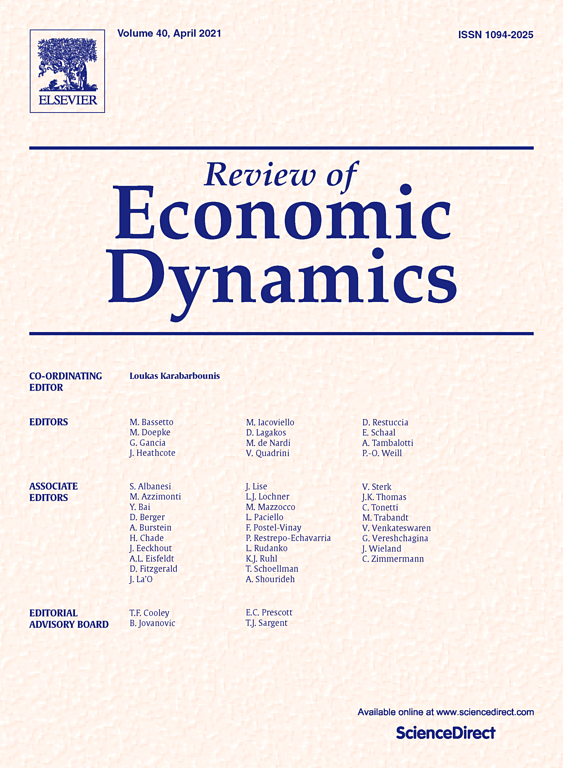
Complex-task Biased Technological Change and the Labor Market
in: Review of Economic Dynamics, April 2017
Abstract
In this paper we study the relationship between task complexity and the occupational wage- and employment structure. Complex tasks are defined as those requiring higher-order skills, such as the ability to abstract, solve problems, make decisions, or communicate effectively. We measure the task complexity of an occupation by performing Principal Component Analysis on a broad set of occupational descriptors in the Occupational Information Network (O*NET) data. We establish four main empirical facts for the U.S. over the 1980–2005 time period that are robust to the inclusion of a detailed set of controls, subsamples, and levels of aggregation: (1) There is a positive relationship across occupations between task complexity and wages and wage growth; (2) Conditional on task complexity, routine-intensity of an occupation is not a significant predictor of wage growth and wage levels; (3) Labor has reallocated from less complex to more complex occupations over time; (4) Within groups of occupations with similar task complexity labor has reallocated to non-routine occupations over time. We then formulate a model of Complex-Task Biased Technological Change with heterogeneous skills and show analytically that it can rationalize these facts. We conclude that workers in non-routine occupations with low ability of solving complex tasks are not shielded from the labor market effects of automatization.
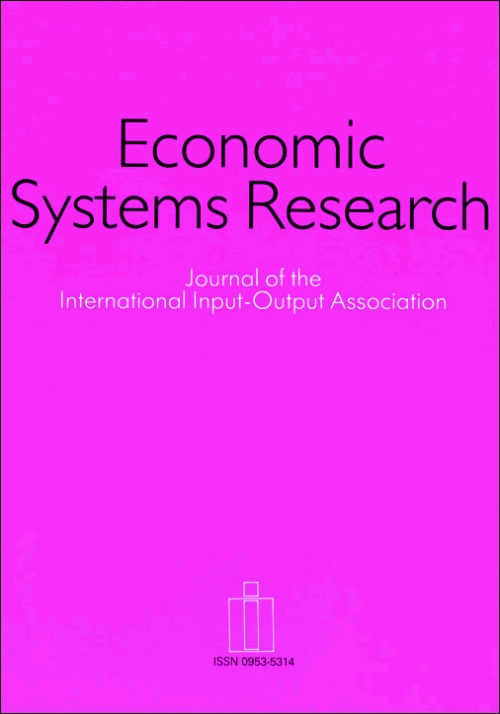
Mapping Potentials for Input-Output Based Innovation Flows in Industrial Clusters – An Application to Germany
in: Economic Systems Research, No. 4, 2016
Abstract
Our paper pursues two aims: first, it presents an approach based on input–output innovation flow matrices to study intersectoral innovation flows within industrial clusters. Second, we apply this approach to the identification of structural weaknesses in East Germany relative to the western part of the country. The case of East Germany forms an interesting subject because while its convergence process after unification began promisingly in the first half of the 1990s, convergence has since slowed down. The existing gap can now be traced mainly to structural weaknesses in the East German economy, such as the absence of strong industrial cluster structures. With this in mind, we investigate whether East Germany does in fact reveal the abovementioned structural weaknesses. Does East Germany possess fewer industrial clusters? Are they less connected? Does East Germany lack specific clusters that are also important for the non-clustered part of the economy?
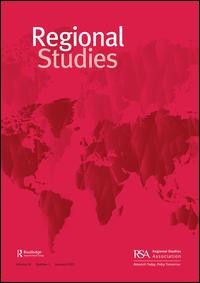
The Importance of Localized Related Variety for International Diversification of Corporate Technology
in: Regional Studies, No. 10, 2016
Abstract
Internationalization of research and development has increased substantially in recent years. This paper analyses the determinants of spatial distribution of foreign technological activities across 96 regions in Germany. It identifies foreign technological activities by applying the cross-border ownership concept to patent applications. The main proposition is that regions with higher related variety of technological activities between sectors attract more foreign technological activities. The estimations show that this is the case in regions characterized by a high overall technological strength. This suggests that related variety facilitates technological diversifications of foreign corporations in regions at the top of the geographic hierarchy.

Burdett–Mortensen Model of on-the-Job Search with Two Sectors
in: Review of Economic Dynamics, Special Issue in Honor of Dale Mortensen 2016
Abstract
The focus of this paper is on the steady state of a two-sector economy with undirected search where employed and unemployed workers can search for jobs, both within a sector and between the sectors. As in the one-sector model, on-the-job search generates wage dispersion among homogeneous workers. The analysis of the two-sector model uncovers a property called constant tension that is responsible for analytical tractability. We characterize the steady state in all cases with constant tension. When time discounting vanishes, constant tension yields the endogenous separation rate in each sector as a linear function of the present value for a worker. The one-sector economy automatically satisfies constant tension, in which case the linear separation rate implies that equilibrium offers of the worker value are uniformly distributed. Constant tension also has strong predictions for worker transitions and value/wage dispersion, both within a sector and between the two sectors. When constant tension does not hold, we compute the steady state numerically and illustrate its properties.
Working Papers
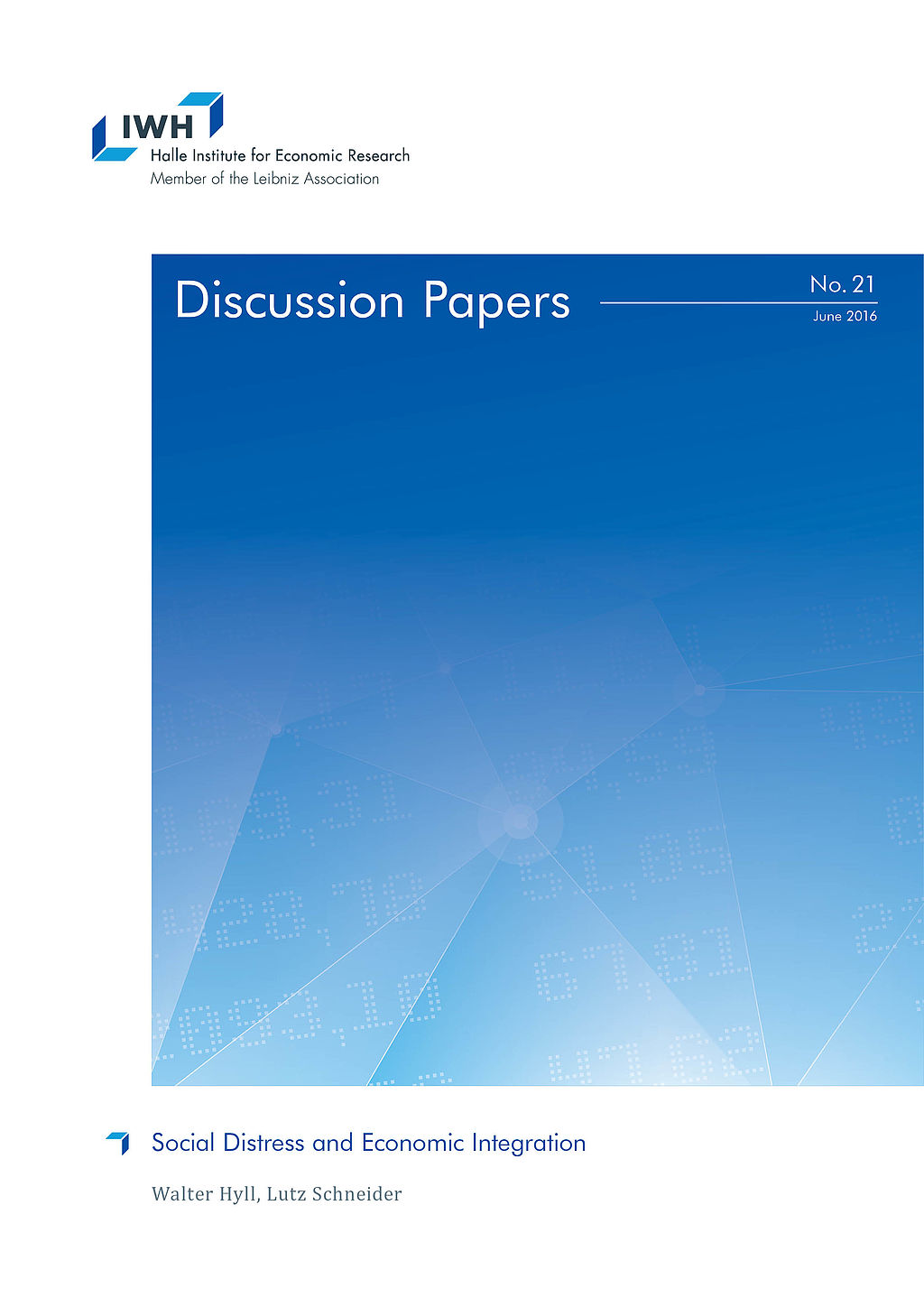
Do Manufacturing Firms Benefit from Services FDI? – Evidence from Six New EU Member States
in: IWH Discussion Papers, No. 5, 2015
Abstract
This paper focuses on the effect of foreign presence in the services sector on the productivity growth of downstream customers in the manufacturing sector in six EU new member countries in the course of their accession to the European Union. For this purpose, the analysis combines firm-level information, data on economic structures and annual national input-output tables. The findings suggest that services FDI may enhance productivity of manufacturing firms in Central and Eastern European (CEE) countries through vertical forward spillovers, and thereby contribute to their competitiveness. The consideration of firm characteristics shows that the magnitude of spillover effects depends on size, ownership structure, and initial productivity level of downstream firms as well as on the diverging technological intensity across sector on the supply and demand side. The results suggest that services FDI foster productivity of domestic rather than foreign controlled firms in the host economy. For the period between 2003 and 2008, the findings suggest that the increasing share of services provided by foreign affiliates enhanced the productivity growth of domestic firms in manufacturing by 0.16%. Furthermore, the firms’ absorptive capability and the size reduce the spillover effect of services FDI on the productivity of manufacturing firms. A sectoral distinction shows that firms at the end of the value chain experience a larger productivity growth through services FDI, whereas the aggregate positive effect seems to be driven by FDI in energy supply. This does not hold for science-based industries, which are spurred by foreign presence in knowledge-intensive business services.

Isolation and Innovation – Two Contradictory Concepts? Explorative Findings from the German Laser Industry
in: IWH Discussion Papers, No. 1, 2015
Abstract
We apply a network perspective and study the emergence of core-periphery (CP) structures in innovation networks to shed some light on the relationship between isolation and innovation. It has been frequently argued that a firm’s location in a densely interconnected network area improves its ability to access information and absorb technological knowledge. This, in turn, enables a firm to generate new products and services at a higher rate compared to less integrated competitors. However, the importance of peripheral positions for innovation processes is still a widely neglected issue in literature. Isolation may provide unique conditions that induce innovations which otherwise may never have been invented. Such innovations have the potential to lay the ground for a firm’s pathway towards the network core, where the industry’s established technological knowledge is assumed to be located. The aim of our paper is twofold. Firstly, we propose a new CP indicator and apply it to analyze the emergence of CP patterns in the German laser industry. We employ publicly funded Research and Development (R&D) cooperation project data over a period of more than two decades. Secondly, we explore the paths on which firms move from isolated positions towards the core (and vice versa). Our exploratory results open up a number of new research questions at the intersection between geography, economics and network research.

Does Proximity Matter in the Choice of Partners in Collaborative R&D Projects? – An Empirical Analysis of Granted Projects in Germany
in: IWH Discussion Papers, No. 12, 2014
Abstract
This paper contributes to the discussion on the importance of physical distance in the emergence of cross-region collaborative Research and Development (R&D) interactions. The proximity theory, and its extensions, is used as a theoretical framework. A spatial interaction model for count data was implemented for the empirical analysis of German data from the period from 2005 to 2010. The results show that all tested proximity measurements (geographical, cognitive, social and institutional proximity) have a significant positive influence on collaboration intensity. The proximity paradox, however, cannot be confirmed for geographical, social and institutional proximity, but for cognitive proximity.

Is Subsidizing Companies in Difficulties an Optimal Policy? An Empirical Study on the Effectiveness of State Aid in the European Union
in: IWH Discussion Papers, No. 9, 2014
Abstract
Even though state aid in order to rescue or restructure ailing companies is regularly granted by European governments, it is often controversially discussed. The aims for rescuing companies are manifold and vary from social, industrial and even political considerations. Well-known examples are Austrian Airlines (Austria) or MG Rover (Great Britain). Yet, this study aims to answer the question whether state aid is used effectively and whether the initial aim why aid has been paid has been reached, i.e. the survival of the company. By using data on rescued companies in the EU and applying a survival analysis, this paper investigates the survival rates of these companies up to 15 years after the aid has been paid. In addition, the results are compared to the survival rates of non-rescued companies which have also been in difficulties. The results suggest that despite the financial support, business failure is often only post-poned; best survival rates have firms with long-term restructuring, enterprises in Eastern Europe, smaller firms and mature companies. However, non-funded companies have an even higher ratio to go bankrupt.
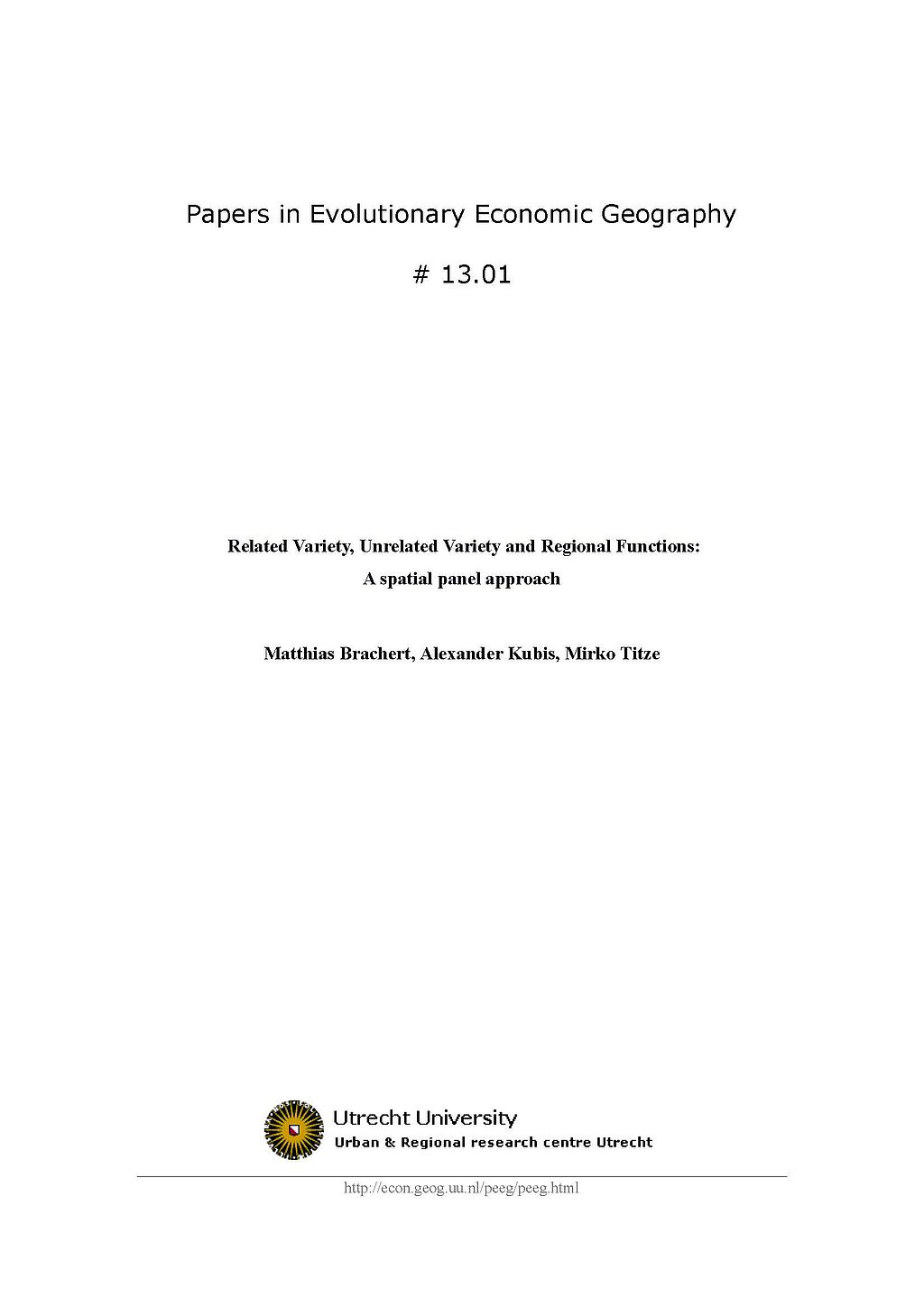
Related Variety, Unrelated Variety and Regional Functions: A spatial panel approach
in: Papers in Evolutionary Economic Geography, 2013
Abstract
The paper presents estimates for the impact of related variety, unrelated variety and the functions a region performs in the production process on regional employment growth in Germany. We argue that regions benefit from the existence of related activities that facilitate economic development. Thereby the sole reliance of the related and unrelated variety concept on standard industrial classifications (SIC) remains debatable. We offer estimations for establishing that conceptual progress can be made when the focus of analysis goes beyond solely considering industries. We develop an industry-function based approach of related and unrelated variety and test our hypothesis by the help of spatial panel approach. Our findings suggest that related variety as same as unrelated variety facilitate regional employment growth in Germany. However, the drivers behind these effects do differ. While the positive effect of related variety is driven by high degrees of relatedness in the regional “R&D” and “White-Collar”-functions, the effects of unrelated variety are spurred by “Blue Collar”-functions in this period.







